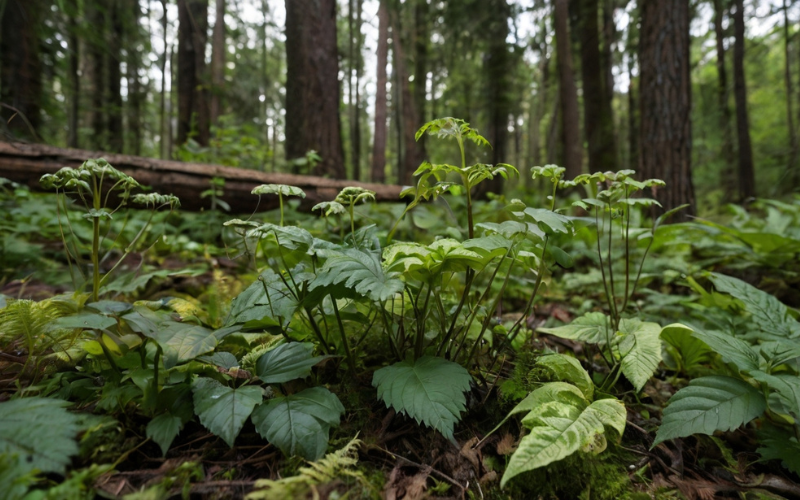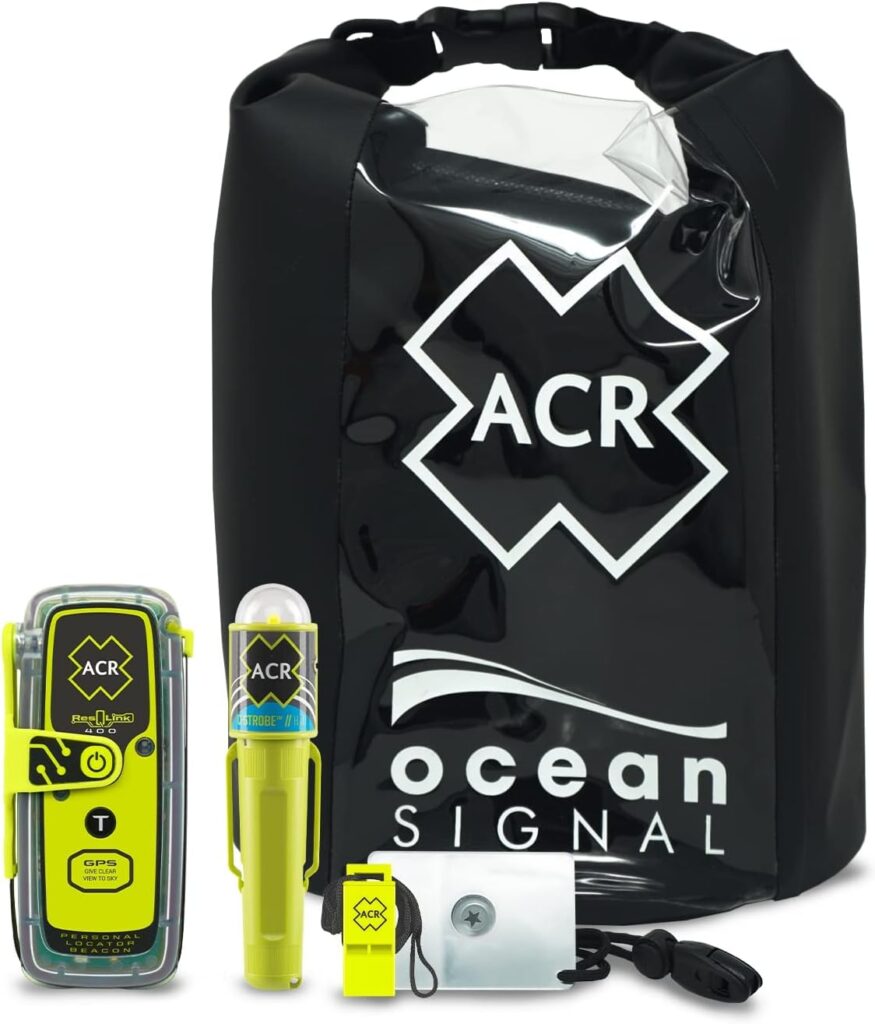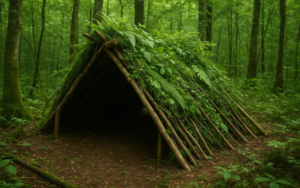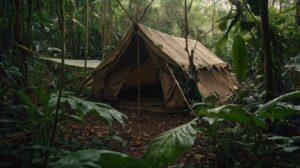If you’re an adventurous forager, the thrill of exploring wilderness’s pantry is hard to resist. Wild berries, leafy greens, and earthy mushrooms seem like treasures waiting to be gathered. But with those tasty finds comes a serious responsibility: knowing how to identify poisonous plants. Some can cause mild irritation, while others trigger severe toxic reactions. That’s why it’s essential to learn how to identify poisonous plants before you pick anything. With sharp observation and the right knowledge, you can confidently avoid harmful greenery. This guide will help you identify poisonous plants so you can forage safely and enjoy the wild worry-free.
Discover foraging basics
Foraging may feel like a joyful treasure hunt in the great outdoors. You get fresh air, exercise, and a closer connection with your surroundings. But before you begin filling your basket, it helps to have a solid foundation.
- Start small with identification.
- Focus on a handful of common edibles (like dandelion greens) to build your confidence.
- Use a guidebook to confirm you’re positive about each plant.
- Practice responsible gathering.
- Only collect from areas you know are free of pesticides or harmful chemicals.
- Try to forage in a sustainable way, picking only what you’ll actually use.
- Continuous learning.
- Even the most experienced foragers keep updating their knowledge.
- Make note of local hazards, seasonal variations, and any new species you encounter.
You’ll find that foraging is as much about mindfulness as it is about spotting hidden snacks. When you slow down to observe leaf shapes, colors, and textures, you’re far less likely to pick something you shouldn’t. And that’s crucial when toxic species roam the same habitats as safe ones.
Recognize plant toxicity
Before you gather wild plants, it’s useful to know why they might be dangerous. Plants produce toxins for self-defense, protecting themselves from herbivores, insects, and even certain microbial infections. While these toxins are wilderness’s survival tactic, they can cause big issues for humans.
- Some toxins upset your digestive system, leading to nausea or vomiting.
- Others affect your nervous system and may trigger dizziness, confusion, or worse.
- A few can cause skin irritation, itching, or painful rashes.
When you understand these hazards, it pushes you to be a more careful observer. If a plant’s leaves, sap, or berries irritate your skin, that’s a red flag. Likewise, if you come across something that looks suspiciously like a known toxic species, it’s safer to walk away than to guess.
Common misconceptions
You may have heard advice such as “if an animal can eat it, so can I,” but that’s misguided. Some creatures have digestive or metabolic systems that can tolerate plant chemicals humans cannot handle. Another myth is that sweet-tasting berries can’t be harmful. Unfortunately, flavor isn’t always a reliable indicator of toxicity. A plant can taste mildly sweet or neutral and still have dangerous compounds lurking within.
Follow crucial safety tips
To stay safe, you’ll want to develop good habits that reduce risk. These tips might seem obvious, but trust me, they’re the difference between a wonderful outdoor experience and a miserable one.
- Wear protective clothing.
- Gloves minimize skin contact with potential irritants.
- Long sleeves and pants help shield you from brushing against poisonous leaves.
- Bring a field guide or use a foraging app.
- Double-check photographs, descriptions, and distribution maps.
- Compare multiple reference points to ensure you have the right ID.
- Test carefully.
- Never taste a plant you haven’t positively identified.
- If you suspect something might be toxic, don’t handle it more than necessary.
- Know your local resources.
- Some regions have poison hotlines or local experts who can help identify questionable finds.
- A quick consultation could spare you from learning the hard way.
By following these steps, you’ll build a safety net around your foraging adventures. Think of them as a routine checklist before you head out.
Review common toxic species
Now, let’s look more closely at some of the most notorious toxic plants you might encounter. This section offers a deeper dive into each plant’s key features, common habitats, and potential dangers. These are not the only toxic species out there, but they’re well-known troublemakers that grow in a variety of regions.
Poison ivy, poison oak, and poison sumac
These three are infamous for causing itchy, blistery rashes due to an oily compound called urushiol. You might find them in forests, along riverbanks, or even in your backyard.
- Poison ivy usually has three leaflets, with the middle one often having a slightly longer stem.
- Poison oak leaves can resemble oak leaves, also in clusters of three.
- Poison sumac typically has smooth-edged leaflets arranged in pairs, plus one “terminal” leaflet at the tip.
If you brush against them, washing the area immediately with soap and water can help remove some of the irritant. But if you develop a rash, over-the-counter remedies or medical attention may be in order.
Deadly nightshade (Atropa belladonna)
With dark, bell-shaped flowers and shiny, black berries, deadly nightshade can seem harmless at first glance. Yet its name is no exaggeration. The plant contains tropane alkaloids, which can cause blurred vision, confusion, and even hallucinations.
- Leaves are oval-shaped, sometimes slightly pointed.
- Flowers are purple or greenish, nodding downward beneath the foliage.
- Berries mature into a glossy black color that looks tempting but is extremely dangerous if consumed.
Even a few berries can pose serious health risks. If you spot this plant, observe it from a distance and never handle or taste its parts.
Oleander
Oleander is often used as a decorative hedge or ornamental plant, especially in warmer climates. Despite its pretty pink or white blossoms, every part of oleander is loaded with cardiac glycosides, which affect the heart and digestive system.
- Leaves are long, slender, and leathery, arranged in whorls around the stem.
- Flowers typically form in clusters at the tips of branches.
- Even the smoke from burning oleander cuttings can be toxic if inhaled.
Because of its frequent use in landscaping, humans can underestimate its danger. If you see it in a wild or cultivated area, give it space. Don’t even handle broken branches or leaves unless you’re fully protected.
Water hemlock
Regarded as one of the most poisonous plants in North America, water hemlock contains cicutoxin, a powerful neurotoxin that leads to seizures and can be fatal. It thrives in wet meadows, along streams, and in marshy areas.
- Tall, with hollow stems and clusters of small white flowers forming umbrella-shaped clusters.
- Stems are often streaked with purple.
- The root system has tubers that can sometimes be mistaken for wild parsnips.
If you’re foraging near water sources, you might confuse water hemlock with other white-flowered plants such as cow parsnip or Queen Anne’s lace. Always verify the shape of roots, the color of stems, and the arrangement of leaves before deciding it’s safe.
Foxglove
Known for its tall spires of tubular flowers in shades of purple or pink, foxglove is both beautiful and harmful. It contains cardiac glycosides that can disrupt heart function.
- Flowers are arranged in a downward-facing column, shaped like dangling bells.
- Leaves near the base are large and fuzzy, gradually getting smaller as they climb the stem.
- The plant is often cultivated in gardens, but it also escapes into the wild.
If you spot foxglove, enjoy its beauty from a respectful distance. Even small ingestions can lead to serious heart-related complications.
Lily of the valley
These delicate, white, bell-shaped flowers look innocent, but the plant is full of cardiac glycosides that can cause irregular heartbeats. Because lily of the valley spreads easily through underground rhizomes, it often forms large colonies.
- Small, dangling, clustered bells that exude a sweet fragrance.
- Broad, lance-shaped leaves that come up in pairs.
- Commonly found in shaded or partially shaded woodland areas.
Children and pets can be tempted by the plant’s bright red berries later in the season. Teach kids to recognize and avoid them, and keep a watchful eye on your four-legged friends.
Rhubarb leaves
Rhubarb stalks can be a tasty ingredient for pies and jams, but the leaves themselves contain oxalic acid and other compounds that can be dangerous to ingest.
- Large, triangular leaves with thick, fibrous stalks (usually reddish or greenish red).
- Veins in the leaves are quite pronounced.
- Mild to moderate poisoning can present as stomach pain, vomiting, or diarrhea.
If you’re growing rhubarb or find some in the wild, remember that only the stalks are edible. Always discard the leaves in a safe manner so nobody accidentally confuses them for greens.
Rosary pea
A small but deadly plant, the rosary pea produces bright red seeds with a black spot around the “eye.” These seeds contain abrin, a toxin that can be lethal in minuscule amounts.
- The bright red seeds are often used in jewelry or prayer rosaries (hence the name).
- Leaves are pinnate, growing in pairs along a main stem.
- Found in tropical or subtropical climates, climbing fences or shrubs.
The seeds are beautiful but extremely hazardous if they’re crushed or the coating is broken. Even a single seed can be risky. If you suspect a plant is a rosary pea, treat it like an immediate danger.
Castor bean
The castor bean plant is known for its broad green or reddish-purple leaves and spiky seed pods. Those seeds contain ricin, one of the world’s most potent toxins.
- Leaves can have five to nine lobes with serrated edges.
- Seed pods are covered with soft spines, and the seeds themselves are marbled in color.
- Often grown ornamentally, but can escape into the wild in warmer regions.
All parts of the plant are toxic, but the seeds pose the greatest threat. Even handling the pods carelessly can lead to accidental poisoning if you later touch your mouth or eyes.
Pokeweed
You might see pokeweed’s bright red or purple berries peeking out from tall, reddish-pink stems. The plant is common in fields, roadsides, and disturbed soils.
- Young leaves are sometimes mistaken for spinach by inexperienced foragers.
- Berries transition from green to deep purple as they mature.
- Contains a variety of toxic compounds causing stomach upset, diarrhea, and dizziness.
Some people boil young pokeweed leaves multiple times to reduce toxicity, a traditional approach called “poke salad.” However, without precise knowledge, you risk severe poisoning.
White snakeroot
A rather unassuming woodland plant, white snakeroot bears small clusters of delicate white flowers. It contains tremetol, which can cause muscle tremors and other severe symptoms.
- Usually grows up to three feet tall, with branching clusters of fuzzy, white flowers.
- Leaves are egg-shaped, with serrated edges and pointed tips.
- Common in shady woods or along forest borders.
Historically, milk sickness occurred when cows ate snakeroot, passing its toxins into their milk. Humans who drank this milk became extremely ill. This unusual chain of poisoning underscores how toxic plants can reach you indirectly.
Spot early poisoning signs
Identifying a plant in time is best, but sometimes mistakes happen. If you or someone around you shows any of these symptoms after possible contact or ingestion, consider it a potential emergency.
- Nausea, vomiting, or diarrhea
- Dizziness, confusion, or headaches
- Difficulty breathing or swallowing
- Rashes, hives, or severe itching
- Abnormal heart rate or chest pain
Many of these signs appear quickly, but some can be delayed. If you’re uncertain which plant caused the problem, try to recall its appearance (leaf shape, color, flowers, or berries). Such details can help medical professionals start the right treatment promptly.
Prepare for emergencies
A big part of safe foraging is having a plan if something goes wrong. A poison-related emergency can escalate quickly, so it pays to be ready.
- Research local poison control hotlines.
- Keep the number easily accessible on your phone.
- Time is critical, so you don’t want to waste minutes searching for a contact.
- Don’t induce vomiting blindly.
- Some toxins can cause more damage coming back up.
- Follow instructions from a medical professional.
- Share your foraging location.
- Let friends or family know where you’re going and your expected return time.
- If you’re in a remote area, consider carrying a personal locator device in case cell service is spotty.
Remember that each plant’s toxins have different effects, and ingesting even a small amount may require urgent medical help. Acting swiftly and calmly can make a massive difference in the outcome.
Remember key takeaways
Foraging offers a treasure trove of fresh flavors. However, there’s a flip side to that coin. Many toxic species look similar to delicious, edible plants, and one slip-up can have painful consequences. Building a personal poisonous plants list in your notebook (or phone) helps you narrow down which species to approach and which to handle with the utmost caution.
- Make plant identification your top priority when exploring the wild.
- Keep a watchful eye for subtle differences in leaves, stems, and berries.
- Dress for the journey, wear protective gear, and consult reliable references.
- If you suspect poisoning, seek help immediately.
With diligence and practice, you’ll gain confidence in recognizing the bad actors lurking among the greenery. Soon enough, you’ll be able to gather wild treats knowing you’re well-informed and protected. If you keep learning, observing, and respecting your environment, your time in the wilderness will be all the more rewarding. So go ahead, safely explore those forests and fields! Just remember to keep your curiosity high and your caution even higher.







